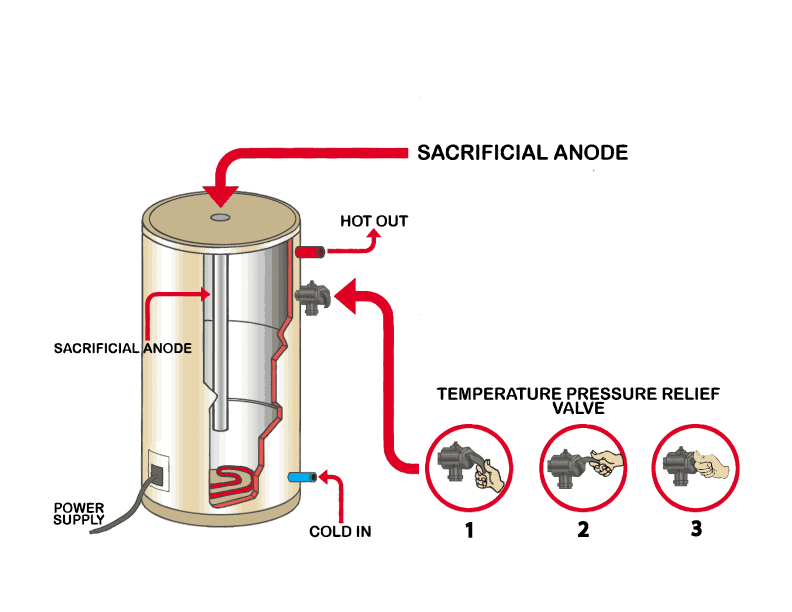A standard hot water system will serve your family for up to 10 years. Due to their long lifespan, many homeowners assume a hot water system is a “set and forget” appliance. We’re here to tell you that this couldn’t be further from the truth!
In order for your hot water system to operate as efficiently and safely as possible, you need to take one action- Flushing your system.
What Type Of Hot Water System Do You Have?
Your home will either have an instantaneous water heater or tank style. The information in this post is geared at those with a tank system. Either gas or electric. Gas hot water systems keep water hot and ready for use in a tank, with a gas powered heater doing all the work. Electric hot water systems store water in a tank too, the main difference is that it has been heated by electricity.
These are the two most common heaters in Australian homes. Both require regular flushing. Around your tank, you’ll find pipes (cold water in, hot water out), a gas or electricity supply, and the all important TPR valve.
TPR Valve
The temperature and pressure relief valve (TPR Valve) is a safety feature. All water heaters are equipped with a TPR Valve. The valve opens if either the temperature or pressure of the water exceeds a safe limit. If the valve opens on its own, this is a sign that a problem might exist and you should contact a plumber for a check up.
It’s important that maintenance checks are carried out regularly, not only when things go wrong because in some cases, hot water systems can go VERY wrong. Check out this video of the Mythbusters demonstrating the effects of a pressure build up in a tank. For safety, most homes have water heaters installed outdoors away from the house to Australian standards. However, this video demonstrates the danger, the force, and the extent of damage water heaters have the ability to cause.
What Can You Do?
In order to make sure your tank’s TPR valve is operating as it should, you must test it regularly. Build up of minerals, rust or corrosion can cause a blockage that would prevent the valve from opening in the case that it needed to.
To test, there are three simple steps you can follow:
- Grip the lever with thumb and forefinger as illustrated above.
- Pull lever fully upwards for two seconds with the forefinger.
- Release and allow the lever to return and press with thumb to make sure valve has reseated.
Hot water should rush out of the end of the drainpipe. If there is no water or only a few drops, it’s time to replace the valve.
Hot Water System
Our experienced plumbers specialise in hot water system maintenance and repairs. We can replace valves and even show you some options to replace your hot water system! If you’re not confident in testing the TPR valve yourself, don’t worry! Our technicians can do it for you! Regular hot water system safety inspections will ensure your tank is safe, providing clean hot water in the most energy efficient way it can be. Plus they can help your tank last up to 3 times longer.
Our hot water system safety inspection includes not only the TPR test but also inspection of the sacrificial anode and a water pressure test. All for your peace of mind. Call us today on 1300 859 383 or book online if your water heater needs attention!




